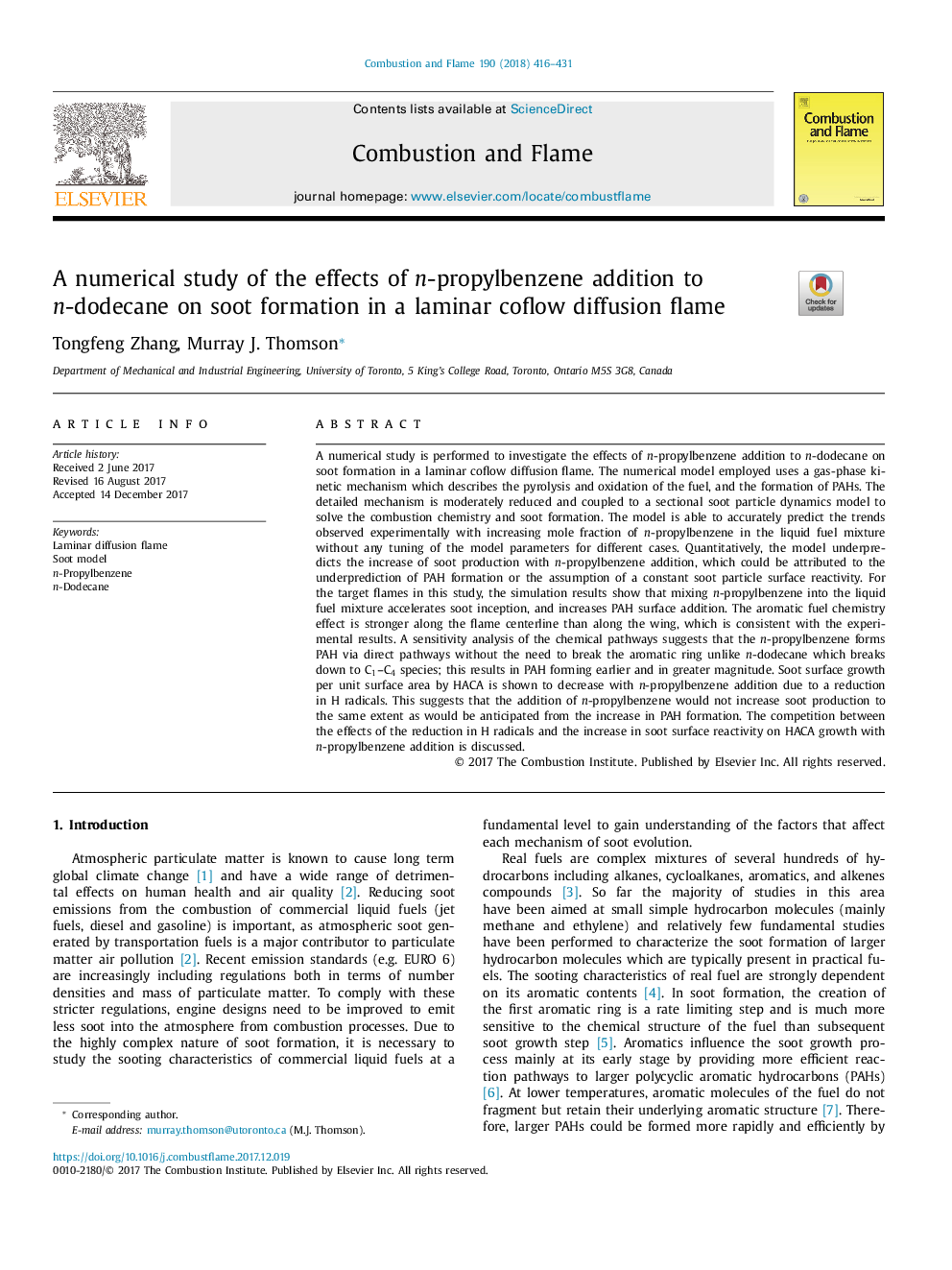| Article ID | Journal | Published Year | Pages | File Type |
|---|---|---|---|---|
| 6593871 | Combustion and Flame | 2018 | 16 Pages |
Abstract
A numerical study is performed to investigate the effects of n-propylbenzene addition to n-dodecane on soot formation in a laminar coflow diffusion flame. The numerical model employed uses a gas-phase kinetic mechanism which describes the pyrolysis and oxidation of the fuel, and the formation of PAHs. The detailed mechanism is moderately reduced and coupled to a sectional soot particle dynamics model to solve the combustion chemistry and soot formation. The model is able to accurately predict the trends observed experimentally with increasing mole fraction of n-propylbenzene in the liquid fuel mixture without any tuning of the model parameters for different cases. Quantitatively, the model underpredicts the increase of soot production with n-propylbenzene addition, which could be attributed to the underprediction of PAH formation or the assumption of a constant soot particle surface reactivity. For the target flames in this study, the simulation results show that mixing n-propylbenzene into the liquid fuel mixture accelerates soot inception, and increases PAH surface addition. The aromatic fuel chemistry effect is stronger along the flame centerline than along the wing, which is consistent with the experimental results. A sensitivity analysis of the chemical pathways suggests that the n-propylbenzene forms PAH via direct pathways without the need to break the aromatic ring unlike n-dodecane which breaks down to C1C4 species; this results in PAH forming earlier and in greater magnitude. Soot surface growth per unit surface area by HACA is shown to decrease with n-propylbenzene addition due to a reduction in H radicals. This suggests that the addition of n-propylbenzene would not increase soot production to the same extent as would be anticipated from the increase in PAH formation. The competition between the effects of the reduction in H radicals and the increase in soot surface reactivity on HACA growth with n-propylbenzene addition is discussed.
Related Topics
Physical Sciences and Engineering
Chemical Engineering
Chemical Engineering (General)
Authors
Zhang Tongfeng, Murray J. Thomson,
